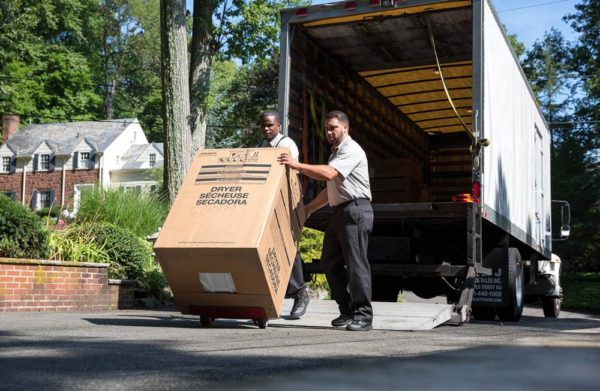LTL (Less than Truckload) freight charges need careful consideration to obtain only the best rates.
When shipping goods, customers must be aware of these charges when making budgets. It’s also essential for managing expectations.
For many clients, LTL shipping is an attractive choice simply for the fact that there are numerous options available. With that, customers feel empowered, in control, and can get complete transparency from freight companies.
When trying to get the best shipping rates, below are several tips you should keep in mind at all times. When you are armed with this information, the whole experience becomes a breeze.
Tips to Get the Best LTL Rates
LTL loads don’t fill a truckload, thus requiring different rates. Logistics companies charge these loads differently than when they fill up one or more trucks. The typical LTL load is from 151 lbs to about 20k lbs.
Different carriers will offer customers a discount on each shipment depending on weight increase. This means rates at 151 are different from those at 20k lbs. In case a customer wants to ship large pallets, say more than 5, they can still use LTL carriers.
The only difference is they get spot quotes depending on the rate by each carrier. This is why LTL is a jungle for many clients and requires a lot of research to get by. Learning tips on how to get the best rates is a must for all clients.
LTL rates differ from truckload rates immensely. When dealing with truckload shipment, charges are more straightforward.
As for LTL carriers, they function by receiving freight from different shipping companies. Once received, this freight is placed in long-haul vehicles to their delivery destination.
Upon arrival, further sorting sees smaller freight delivered to other destinations. With that in mind, some of the tips include:
1. Freight Rate Volatility
Time shipping products to when carriers are experiencing low demand for services. Check the different supply and demand seasons in different regions before engaging LTL carriers. For example, around the holiday seasons, demand for LTL carriers goes high, which results in increased prices.
Every port where the goods pass through can either have a guaranteed contract or charge them on the spot. For example, if there’s a prediction that charges will be cheaper after goods are sent, then a customer can opt for spot charges. If not, then a guaranteed contract with specified LTL freight charges is the better option.
2. Learn More on Liability Coverage
LTL carriers vary when it comes to liability of lost or damaged goods in transit or storage.
For example, how much is a carrier supposed to pay if goods worth $20000 are damaged or lost? An honest answer to this depends on the liability cover the carrier offers.
Inquire about this before engaging any LTL carrier’s services to avoid heavy losses if there’s an incident. A great way to learn this is to engage logistics companies that are transparent in all these matters.
With the correct information, it’s easier to make a wise decision.
Top carriers will ensure goods are properly covered to the satisfaction of their customers. This entails having the correct insurance cover since goods can get damaged while in transit.
3. Reduce Pallet Sizes as Much as Possible
When it comes to shipping goods, pallet sizes determine the overall freight charges. When there’s plenty of empty space in it, the cost incurred is higher. Ensure to minimize pallet sizes to reduce charges in terms of oversize fees.
Another area that concerns minimizing charges is avoiding excessive height. Make your pallet height lower than 60 inches at all times.
LTL carriers tend to charge more freight charges to those that exceed 60 inches. This can mess with a predetermined budget upon arrival.
4. Master Rules Tariffs
In a bid to charge more, LTL carriers have what is called Ruled Tariffs. These are hidden charges that come in the form of large, cumbersome books.
These fees are applicable due to several factors, such as zip codes, delivery fees, and surcharges in specific locations.
A good LTL carrier will help clients understand all these hidden charges and include them in their budgets.
5. Grasp Freight Routes Imbalances (FRI)
Also known as carrier lanes, FRI’s have a direct impact on the amount each customer pays for shipping. There are two common terms used when referencing FRI, and these are:
Backhaul lane
This is mainly cargo that can be shipped when the empty carrier is heading back after delivery.
Most LTL carriers despise empty trailers on the return trip and offer huge discounts for goods.
Headhaul lane
This is the order that sets the carrier on its way before making the backhaul trip back to port. For this trip, the LTL carriers charge a higher amount.
6. Ship Everything at Once
As a client who ships goods on the same route often, try to consolidate shipping. Collect all the goods and ship them once to avoid premium charges associated with each Headhaul. Such an arrangement can save shippers close to 90% of the excess charges incurred per trip.
Stack all the boxes in one pallet and save a good amount in shipping costs.
7. Choose the Best LTL Carrier Depending on the Route
For each route, there are specific carriers who are better suited and offer the best freight charges. Research is therefore required to select the best carrier for a certain route. This works in a similar way to airlines.
Airlines have certain local hubs— the same applies to freight carriers. The price charged is determined by how familiar a freight company is with certain lanes and hubs. For example, for long cross-country hauls, select a carrier that is best suited for that.
8. Negotiate Rates
Customers need not accept all freight charges presented to them, as is by LTL carriers. It’s essential to note that there’s always room for negotiations.
Also, some discounts come at hand with a little nudging in the right direction.
Have a conversation with the LTL carrier and see what can be done to bring down the total costs. The prices are not set on stone.
9. Take Note of Accessorial Charges
Apart from the simple dock to dock shipping, there are other services an LTL carrier can offer. These services include home/office delivery, liftgate, and delivery to limited access areas like prisons or hospitals.
All these are extra services that add to the shipping budget. Keep this in mind always when negotiating rates with an LTL carrier. It’s important to disclose them first hand and see if they’re worth the extra cost or not.
10. Stackable Shipment
Leave the shipment stackable if there are no breakables inside. A delicate shipment takes up more room as no other item can be placed on top of it and brings additional charges.
If a shipment is not fragile or packaged well, leave it stackable and let the LTL carrier know this.
11. Focus on Total Cost
It’s easy to focus on the rates at hand and not keep an eye on extra charges incurred. Enquire on all additional charges until goods reach the agreed-upon destination. Such detailed information helps customers to work with the net cost.
This is especially important when dealing with more than one LTL carrier and different lanes of shipment.
Also, note that not all discounts are good for the net cost. A discount on one lane can mean more expenses in a different lane.
12. Only Pay for Same-Day Delivery When Necessary
If possible, go as per what the LTL carriers offer and avoid same-day delivery. This is a service that carriers charge a premium for, and it highly affects the net cost of shipment. Freight charges will go above and beyond with such a service.
Also, choose a carrier that specializes in the type of goods being shipped. Carriers vary in terms of what they can and cannot ship efficiently. A company with less experience to accommodate certain goods might charge more.
13. Team Up with Other Shippers
Check with other local companies and consolidate shipping. All goods should be packed into manageable pallets and shipped, incurring less cost.
Additionally, grouping up makes it easier to research all the above tips and take advantage of them to minimize freight charges.
14. Seek Out 3PL Companies
Getting all the best rates is not easy, and this is where 3PL companies come in handy. They can help customers to research and negotiate the best freight rates from different LTL carriers.
3PL’s have access to a lot of important technology that small shippers can benefit from.
Also, most 3PL collaborate with experienced companies known to offer the best rates in the industry. This way, costs are kept low, especially as a frequent shipper of small pallets, which can’t be consolidated.
Additionally, companies such as Go Freight Hub offer in-house LTL services and are the best choice for you.
All the above are tricks customers can use to get the best LTL shipping rates. Each ensures that the budget for shipping is manageable and cost-efficient.



